Active Voice vs Passive Voice | How AI can Help.
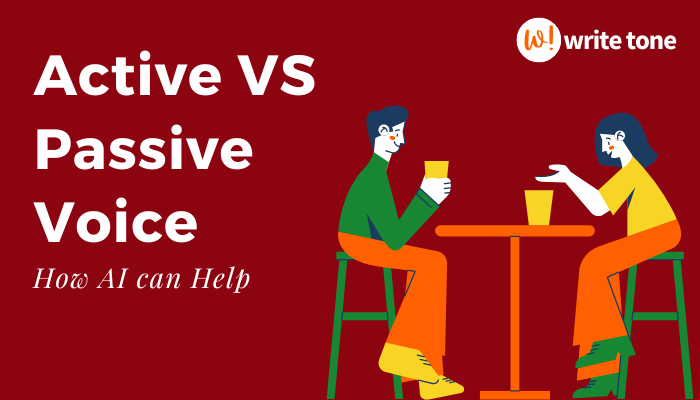
Have you ever read a sentence that made you feel like you were drowning in a sea of words, desperately trying to find the main subject? Yeah, we've all been there.
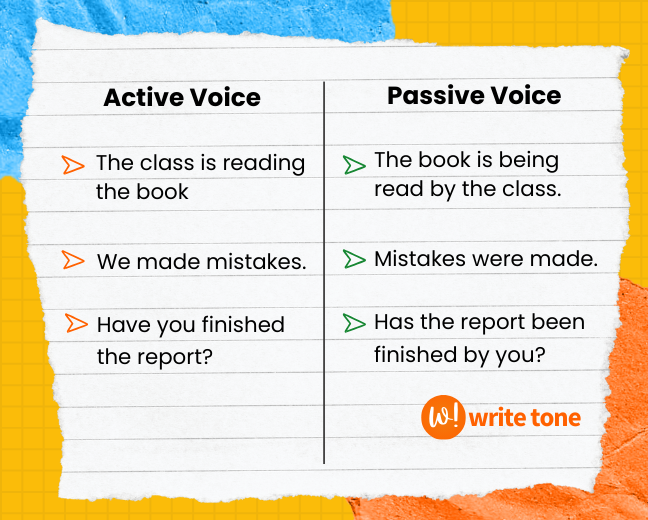
Passive voice can make your writing hard to read. But don't worry, AI can help you out! It can rewrite your sentences so that they're clear and engaging.
| FREE active to passive voice converter >
Before we dive into how AI can help and how artificial intelligence has taken on the role of a writing assistant, helping writers fine-tune their work for maximum impact. Let’s briefly understand what active and passive voice are.
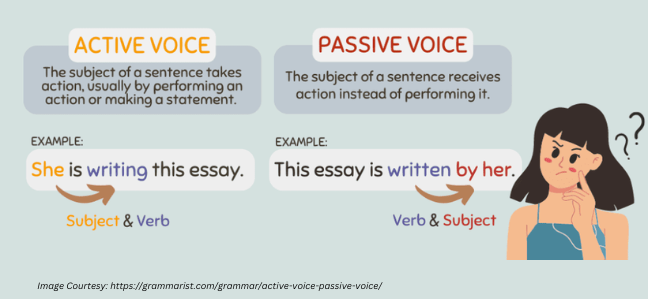
Passive voice
It is a writing style in which the subject of the sentence is acted upon by the verb.
For Example:"The ball was thrown by the boy." In this sentence, the ball is the subject, but it is acted upon by the verb "was thrown."Active voice
It is a writing style in which the subject of the sentence performs the action of the verb.
For Example:"The boy threw the ball." In this sentence, the boy is the subject, and he is performing the action of throwing the ball.The Power of Active Voice
Active voice is a grammatical construction where the subject of a sentence performs the action. This makes your writing more dynamic and engaging
For Example:compare these two sentences: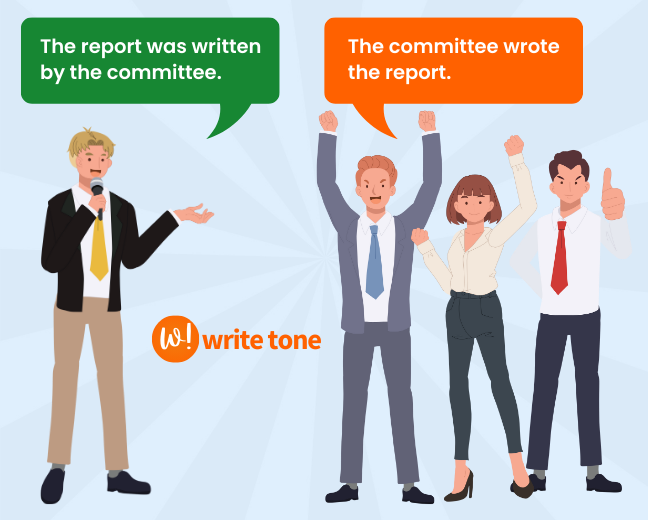
Active voice is generally considered to be more concise and direct than passive voice. It is also more engaging for the reader, as it puts the focus on the actor rather than the action.
- Passive:
- Active:
The house was cleaned this morning.
Cleaned the house this morning.
The Challenge of Passive Voice
While active voice is desirable in most writing situations, but sometimes, passive voice sneaks into our writing. This can make it hard to tell who did the action or make the sentences too long and confusing.
To improve your writing, it's important to be able to recognize passive voice and turn it into active voice. Active voice is clearer and more direct, which makes your writing more effective.
- How to Change Passive Voice to Active Voice:
- Identify the Passive Voice: To identify the passive voice, look for the following clues:
- The verb phrase includes a form of the verb to be (e.g., is, am, are, was, were, been, being).
- The verb is followed by a past participle (usually ending in -ed or -en).
- The subject of the sentence is the receiver of the action and often comes after the verb.
- Identify the Doer:
- Rewrite the Sentence: To rewrite a passive voice sentence into active voice, follow these steps:
- Identify the doer of the action:
- Place the doer:
- Use an appropriate verb:
- Make any necessary adjustments:
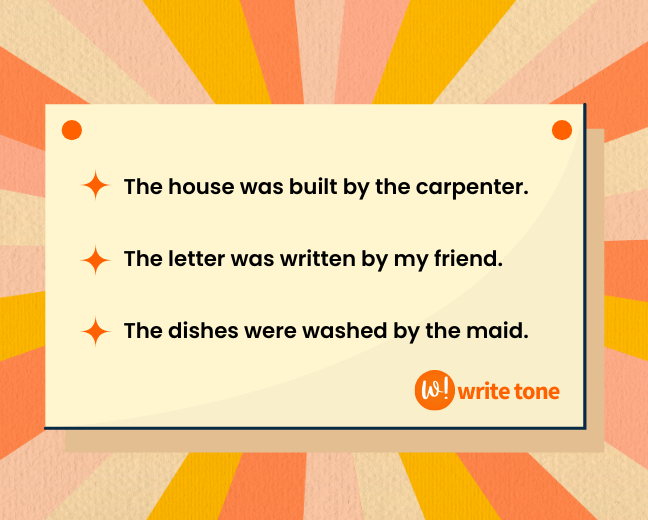
In an active voice sentence, the subject performs the action. The subject is the doer of the action. It usually follows this structure: Subject + Verb + Object
For Example:
the sentence “the cat chased the mouse”, the subject is cat, and the action is chased. The cat is the doer of the action.
This information is often found in the by phrase in passive sentences. If there is no by phrase or it's not relevant, you may need to make an educated guess based on the context.
Of the action as the subject of the active sentence.
In its active form that matches the tense of the original passive verb.
To the rest of the sentence to maintain clarity and coherence.
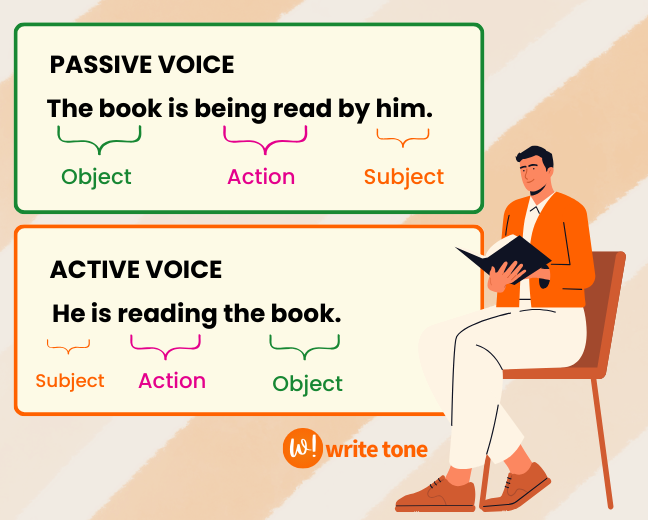
BONUS TIP
On your keyboard, press Control + F or Command + F and search for these words that indicate passive voice:
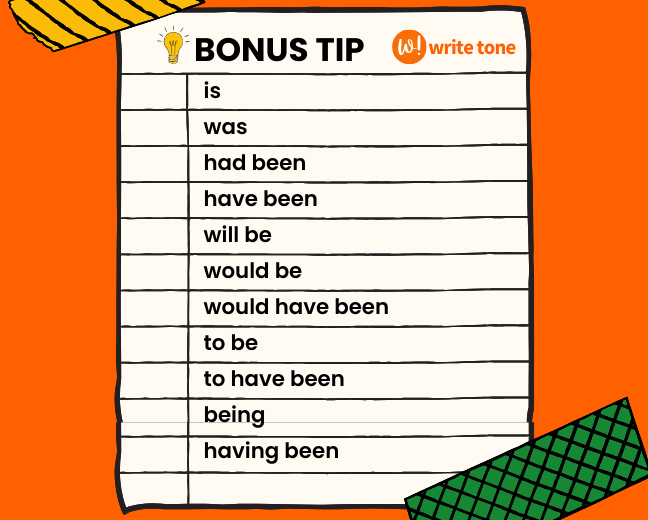
This extra step helps to make sure we didn't miss anything.
Embracing AI: The Write Tone Advantage
Write Tone is an AI-powered writing tool that can help you improve the readability and tone of your content. It's especially good at detecting passive voice and suggesting active voice alternatives.
Write Tone can help you turn a passive, boring sentence into a strong, active statement.
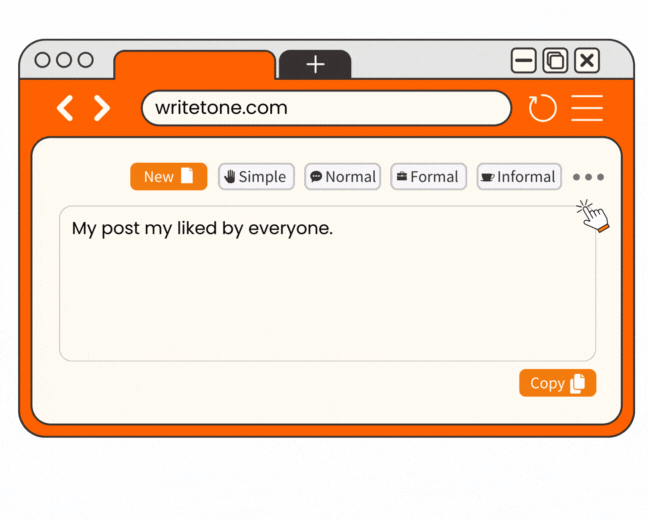
How it works
- Identifying Passive Voice:
- Suggesting Active Voice Revisions:
- Tone Customization:
Write Tone uses large language models to spot passive voice constructions in your text. It highlights these constructions so you can easily see where your writing can be improved.
Once passive voice instances are identified, Write Tone provides instant suggestions for converting them into active voice. These suggestions can help you learn how to use active voice effectively.
In addition to passive-to-active transformations, Write Tone can also help you customize the tone of your writing. Whether you're writing persuasively, informatively, or creatively, Write Tone can suggest adjustments to your writing style to ensure it's effective for your intended audience.
The Results:
By eliminating passive voice and fine-tuning the tone of your writing, Write Tone can help you create clear, engaging content that your readers will appreciate.
The Writer's Best Friend:
In today's fast-paced world, where the demand for high-quality content is ever-increasing, Write Tone can be a writer's best friend. It can save you time, improve the quality of your writing, and help you craft persuasive, informative, or creative pieces with ease.
Embracing AI: The Write Tone Advantage
While it's generally advisable to use active voice for clarity and directness, there are situations where passive voice is appropriate and even necessary. Here are some common scenarios when passive voice may be used.
Exception # 1 When the doer of the action is unknown or unimportant:
Passive:The documents were stolen.In this case, we don't know or don't want to specify who stole the documents.
Exception # 2 To emphasize the receiver of the action:
Passive: The speech was applauded by the entire audience.The primary focus here is on the positive reaction of the audience (the receiver of the applause) to the speech..
Exception # 3 In scientific or technical writing:
Passive voice is often used to maintain objectivity and avoid personal pronouns. It's common in research papers, lab reports, and technical documentation.
Exception # 4 To de-emphasize the doer of the action:
Passive: Mistakes were made.This construction is sometimes used in public statements or apologies when the doer of the action wants to avoid taking direct responsibility.
Exception # 5 When the doer of the action is obvious or implied:
Passive: The Mona Lisa was painted in the 16th century.In this historical context, it's clear that Leonardo da Vinci painted the Mona Lisa without explicitly stating it.
Conclusion
Changing passive voice to active voice can make your writing more concise, direct, and engaging. It can also help you set the right tone for your text. If you are struggling to change passive voice to active voice, Write Tone can be a helpful tool to master active voice, and set the right tone for your text. No more passive voice. Your writing will be clear, strong, and effective. Your readers will thank you, and your writing will never be the same again.